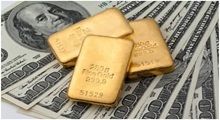Fed’s Normalization And Gold
 We enter deeper into the process of the Fed’s tightening cycle. How exactly will the Fed normalize its interest rates and what does it mean for the US economy and the gold market?
We enter deeper into the process of the Fed’s tightening cycle. How exactly will the Fed normalize its interest rates and what does it mean for the US economy and the gold market?We all know that the Fed is likely to raise interest rates in December. What we do not know, however, is what it really means. The problem is that the Fed does not have direct control over all interest rates in the economy. The US central bank sets only its Fed Funds target rate, which is the desired interest rate at which commercial banks lend funds maintained at the Federal Reserve to other commercial banks overnight. Usually, the Fed influenced the effective Fed Funds rate through open market operations. In normal times, it bought bonds from the banks to increase reserves and brings the interest rates down and sold bonds to the banks to decrease reserves and raise the interest rates.
However, quantitative easing has enormously expanded the Fed’s balance sheet, and commercial banks now have massive excess reserves, so they lack incentives to engage in the overnight market for reserves. Therefore, the sole increase in the Federal Funds target range would not significantly affect other interest rates in the economy (which is good news for the gold market) and would not boost the commercial banks’ lending.
This is why the hike in the Federal Funds target rate is likely to be accompanied by the increase in the interest paid on excess reserves. Theoretically, by such a move the Fed can set a floor under interbank interest rates (since a bank will not lend to another bank for less than the interest the Federal Reserve pays to simply hold those reserves). Therefore, the coming tightening cycle will be unique, since the Fed will not change the quantity of the reserves.
What does it mean for the U.S. economy and the gold market? First, the Fed monetary policy will remain accommodative regarding its balance sheet. The reserves in the banking system are so massive that the US central bank could be unable to prevent inflation if demand for loans increases rapidly. Second, the new method of tightening, including a new instrument such an interest on excessive reserves, may be not fully understood by the markets. Third, there could be some price discrepancy in the target range, due to the less effective monetary transmission mechanism. Therefore, the Fed’s credibility could be diminished. Lower Fed credibility and higher uncertainty about the Fed’s normalization should spur some safe-haven demand for gold.
The bottom line is that the Fed is likely to raise its target rate in December. However, this time, due to quantitative easing programs and the Fed’s expanded balance sheet, normalization will look different than during previous tightening cycles. The uncertainty about the Fed’s strategy and its effectiveness could erode the U.S. central bank’s credibility and support the price of the yellow metal (you will find more about the process of the normalization of the Fed’s monetary policy and its impact on the gold market in the upcoming edition of the Market Overview.
If you enjoyed the above analysis, we invite you to check out our other services dedicated to the precious metals investors. We invite you to join our gold newsletter today – you’ll also gain 7-day trial of our premium Gold& Silver Trading Alerts. It’s free and if you don’t like it, you can easily unsubscribe.
Arkadiusz Sieron
Sunshine Profits‘ Gold News Monitor and Market Overview Editor















